Disclosure: This article contains affiliate links. We may earn a commission from purchases at no extra cost to you, which helps our travel content.
The rhythmic tap of my running shoes against the pavement near Cheonggyecheon Stream at 5:30 AM reminded me of vinyl records spinning on a turntable – steady, meditative, purposeful. Seoul's morning air carried the faint scent of street food from the previous night, mixed with the promise of cherry blossoms about to burst into their spring spectacle. As a budget traveler who's pounded pavement across five continents, I've developed a knack for experiencing cities deeply without emptying my wallet. Seoul – this magnificent collision of ancient tradition and hyper-modernity – offers extraordinary value for the mindful traveler. After spending a week navigating its sprawling neighborhoods on less than $50 a day, I'm convinced it's one of Asia's most underrated budget destinations. Forget what you've heard about South Korea being expensive; with the right approach, Seoul delivers cultural riches that far outweigh their modest cost.
Finding Your Rhythm: Budget Accommodation Strategies
Every journey needs a home base – a place to reset your internal metronome before venturing back into the city's symphony. In Seoul, this doesn't mean sacrificing comfort for savings.
My home for the week was Hongdae Guesthouse, a spartan but spotlessly clean hostel in the university district where I paid just ₩18,000 ($15) per night for a bunk in an 8-person dorm. The real value wasn't just the price – it was the community kitchen where I'd brew morning coffee alongside Korean students and European backpackers, exchanging tips while K-pop played softly in the background.
For those seeking more privacy without breaking the bank, goshiwons offer a fascinating cultural immersion. These tiny single rooms (originally designed for students studying for exams) typically run ₩20,000-30,000 ($17-25) per night. They're small – meditation-level small – but most include free rice, kimchi, and basic amenities. I spent two nights in one near Nakseongdae Station, and while the quarters reminded me of a monastery cell, the simplicity helped center my thoughts each evening.
Another option I discovered through a local runner I met during my morning jog: jjimjilbangs (Korean bathhouses) like Dragon Hill Spa or Siloam Sauna. For about ₩10,000-15,000 ($8-12), you get overnight access to communal sleeping areas plus hot baths, saunas, and cold plunge pools – perfect for recovering after a long day of exploration. Just bring your quick-dry travel towel since most places only provide small hand towels.
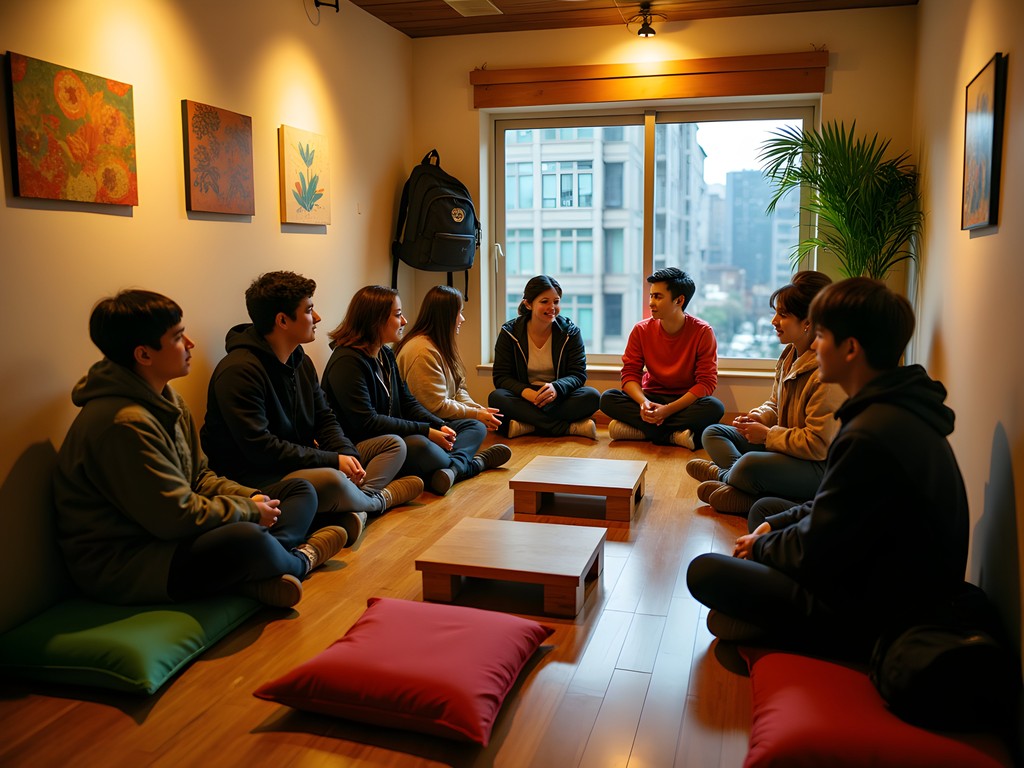
💡 Pro Tips
- Book guesthouses and hostels directly rather than through international booking sites for better rates
- Stay in university areas like Hongdae or Sinchon for cheaper food and accommodation options
- Consider jjimjilbangs (Korean bathhouses) for a unique overnight experience that includes bathing facilities
Temple Trails and Urban Monasteries: Seoul's Spiritual Side
My passion for exploring monasteries began years ago with that life-changing temple run in Thailand, and Seoul offered similar spiritual sanctuaries that cost nothing but delivered everything my soul craved.
Jogyesa Temple, the headquarters of Korean Buddhism, sits improbably in the middle of downtown Seoul. I arrived at 6:30 AM to witness the morning drumming ceremony – a rhythmic meditation that vibrated through my runner's frame. The temple grounds are free to explore, and if you time your visit for Buddha's Birthday (usually May), you'll witness thousands of colorful lanterns transforming the complex into something otherworldly.
For a more immersive experience, I hiked to Bongeunsa Temple on my third morning. This 1,200-year-old sanctuary offers temple stay programs where visitors can experience monastic life for ₩30,000-50,000 ($25-42). I participated in the half-day program, which included meditation, tea ceremony, and a vegetarian temple lunch that centered me for days afterward.
My most profound discovery came through a wrong turn while running in northeastern Seoul. Following a mountain trail that seemed to match my Strava route, I stumbled upon Gilsangsa Temple, a former high-end restaurant converted into a monastery in the 1990s. Here, I joined a free Sunday meditation session led by a monk who spoke enough English to guide me through proper breathing techniques. When he learned of my interest in both running and meditation, he shared the concept of 'moving meditation' that aligned perfectly with what I'd learned in Thailand years before.
Before heading to these spiritual sites, I recommend downloading offline maps on your smartphone since many temples are tucked away in mountain areas with spotty reception. The phone's excellent camera also captured the intricate temple details in stunning clarity, even in challenging lighting conditions.

💡 Pro Tips
- Visit temples early morning (around 6am) to witness morning ceremonies and avoid tourist crowds
- Most temples offer free admission; only special programs like temple stays have fees
- Bring comfortable socks as you'll need to remove shoes before entering temple buildings
Vinyl Hunting: Seoul's Underground Record Shop Scene
Every city has its heartbeat, and for me, that pulse is often found in record shops. Seoul's vinyl scene offers a fascinating glimpse into Korean musical heritage while providing budget-friendly hours of exploration.
My first stop was Seoul Record Fair in the Hongdae district, a monthly gathering of vendors selling everything from rare Korean pressings to international imports. For the price of a coffee (₩4,000/$3.50), I spent three hours flipping through crates, discovering Korean psychedelic rock from the 1970s that I'd never encountered before. The fair rotates locations, so check online for current dates.
Gimbab Records in Itaewon became my regular haunt – a basement shop where owner Mr. Kim speaks limited English but communicates fluently in the universal language of music enthusiasm. When I mentioned my interest in spiritual music (stemming from my monastery visits), he pulled out obscure temple recordings and traditional Korean folk albums that blended perfectly with my meditation practice back home.
For those seeking Western releases, Purple Record Store in Yongsan Electronics Market offers competitive prices on new vinyl. I scored a Korean pressing of a jazz album for ₩15,000 ($12.50) that would have cost twice that in Toronto. The shop owner, noticing my marathon finisher's shirt, introduced me to Korean running clubs that gather on weekends – connections that transcended commerce.
Between record shops, I fueled up at local kimbap shops, where these seaweed rice rolls cost just ₩2,500-3,000 ($2-2.50) and provided perfect portable energy for my vinyl expeditions. I tracked my daily spending and music discoveries in my trusty travel journal, which has documented my finds across 23 countries and counting.

💡 Pro Tips
- Visit Gimbab Records early in the day when the owner has more time to share recommendations
- Bring cash to smaller record shops as many don't accept foreign credit cards
- Ask for 'local pressing' versions of albums which are often cheaper than imports
Seoul's Mall Culture: Beyond Shopping
My fascination with malls as cultural spaces rather than shopping destinations led me to some of Seoul's most interesting social environments – places where you can spend hours soaking in local culture without spending a dime.
Starfield Library inside COEX Mall exemplifies this philosophy. This massive public library features towering bookshelves, free seating, and no expectation to purchase anything. I spent a rainy afternoon there writing in my journal, watching the fascinating intersection of students, businesspeople, and tourists sharing this literary sanctuary.
Common Ground, constructed from shipping containers in Gwangjin-gu, represents Seoul's creative approach to commercial spaces. While the boutiques sell items beyond my budget, the central courtyard hosts free cultural performances on weekends. I caught an incredible traditional percussion ensemble that transformed shipping containers into resonant instruments.
For a uniquely Korean mall experience, I explored Dongdaemun Market's overnight shopping culture. Between midnight and dawn, this sprawling complex buzzes with wholesale activity. Though I wasn't buying, the nocturnal energy and behind-the-scenes glimpse of Korea's fashion industry fascinated me as I wandered through with a ₩1,000 ($0.85) cup of instant coffee, watching designers select fabrics for upcoming collections.
My most unexpected mall discovery came at IFC Mall in Yeouido, where the rooftop garden offered a free running track with spectacular Han River views. I logged a quick 5K there before descending to the basement food court, where free samples from dozens of vendors constituted a legitimate lunch option. The vendors seemed to appreciate my enthusiastic reactions to new flavors, often offering additional tastings when I expressed genuine interest in their specialties.

💡 Pro Tips
- Visit mall food courts just before closing time (usually 9-10pm) when many vendors offer discounts to avoid food waste
- Use mall facilities like clean restrooms, filtered water stations, and free WiFi as rest stops during long sightseeing days
- Check mall event calendars online for free performances and cultural demonstrations
Fueling Your Journey: Budget Food Strategies
Marathon runners understand that proper fueling is everything, and budget travel follows the same principle. In Seoul, eating well while spending little requires rhythm and strategy.
University neighborhoods became my culinary home base. Near Hongik University, I discovered student cafeterias where ₩5,000-7,000 ($4-6) bought hearty, nutritious meals. Most don't advertise to tourists, but look for buildings with steady student traffic around mealtimes and follow the crowd. My go-to spot near Hongdae served a bibimbap with seven vegetables that powered my afternoon explorations.
Street food markets offer Seoul's most budget-friendly dining experiences. Gwangjang Market became my dinner destination three nights running, where ₩3,000-4,000 ($2.50-3.50) portions of mung bean pancakes (bindaetteok) and spicy rice cakes (tteokbokki) satisfied both my hunger and cultural curiosity. The vendors' theatrical cooking performances added entertainment value beyond the modest price.
Convenience stores – particularly CU and GS25 – served as my breakfast providers. For ₩4,000-6,000 ($3.50-5), I assembled surprisingly decent meals: kimbap rolls, hard-boiled eggs, and banana milk became my pre-run fuel. Many stores offer microwave access and small eating areas, transforming simple ingredients into proper meals.
For hydration, I relied on my reusable water bottle filled at the abundant public water fountains throughout Seoul's subway stations. This single investment saved me at least $3-5 daily on bottled water while reducing plastic waste – a win for both budget and environmental conscience.
My splurge meal? A ₩10,000 ($8.50) bowl of handmade knife-cut noodles (kalguksu) at Myeongdong Kyoja, where the rhythmic chopping of dough by elderly ladies in the open kitchen reminded me of the meditative temple ceremonies I'd witnessed days earlier. Some experiences justify stretching the budget just a little.
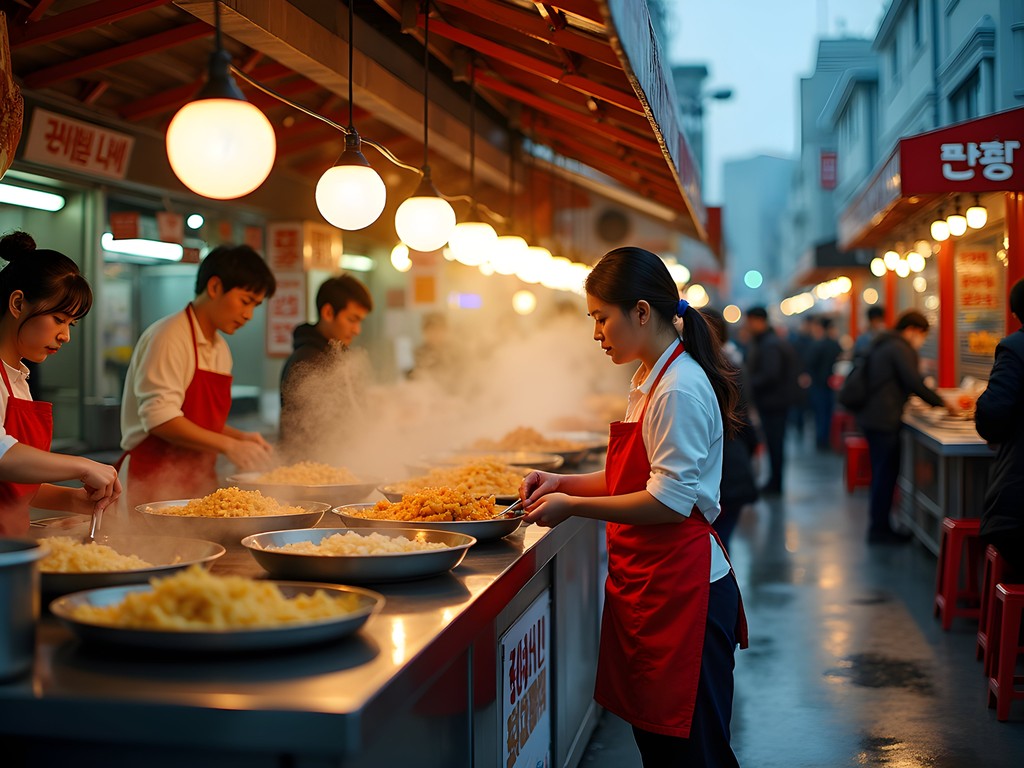
💡 Pro Tips
- Look for restaurants with pictures or plastic food displays to overcome language barriers when ordering
- Eat your main meal at lunch when the same dishes often cost 30-40% less than dinner prices
- Visit local markets around 30 minutes before closing for discounted fresh food
Free Running Routes: Seeing Seoul on Foot
Running through a city reveals its true character in ways tour buses never can – and costs absolutely nothing. Seoul's extensive parks and riverside paths make it a runner's paradise, regardless of your pace or distance preference.
My favorite morning route followed the Han River Park's dedicated running path. Starting near Yeouido, I'd log 5-10K along the water while watching Seoul wake up – elderly tai chi practitioners, young professionals on electric scooters, and fellow runners nodding in that universal greeting of pavement-pounders worldwide. The path is well-marked, flat, and features water fountains and public restrooms at regular intervals.
For hill training with cultural benefits, I tackled Namsan Park, home to N Seoul Tower. The 2.5K loop to the summit provided both quad-burning elevation and spectacular city views. Early mornings (before 7 AM) meant sharing the path primarily with dedicated local runners and hiking seniors who often outpaced me on the steeper sections.
My most memorable run came through the historic Bukchon Hanok Village at dawn. Navigating the narrow alleyways between traditional Korean houses before tourists arrived felt like running through a living museum. The neighborhood's cats regarded me with aristocratic disdain as I carefully followed my GPS running watch to avoid getting lost in the labyrinthine passages.
Seoul's palaces open their gates at specific morning hours, and timing your run to coincide with these openings provides unique perspectives. I circled Gyeongbokgung Palace just as it opened at 9 AM, watching the changing of the guard ceremony from a runner's vantage point before the tour buses arrived.
Beyond the exercise benefits, these running routes connected me with locals in unexpected ways. A wrong turn near Bukhansan led to a chance encounter with a Korean running club who invited me to join their Saturday group run, complete with post-workout kimbap picnic. These connections – made through shared passion rather than tourist interactions – remain my most treasured Seoul memories.
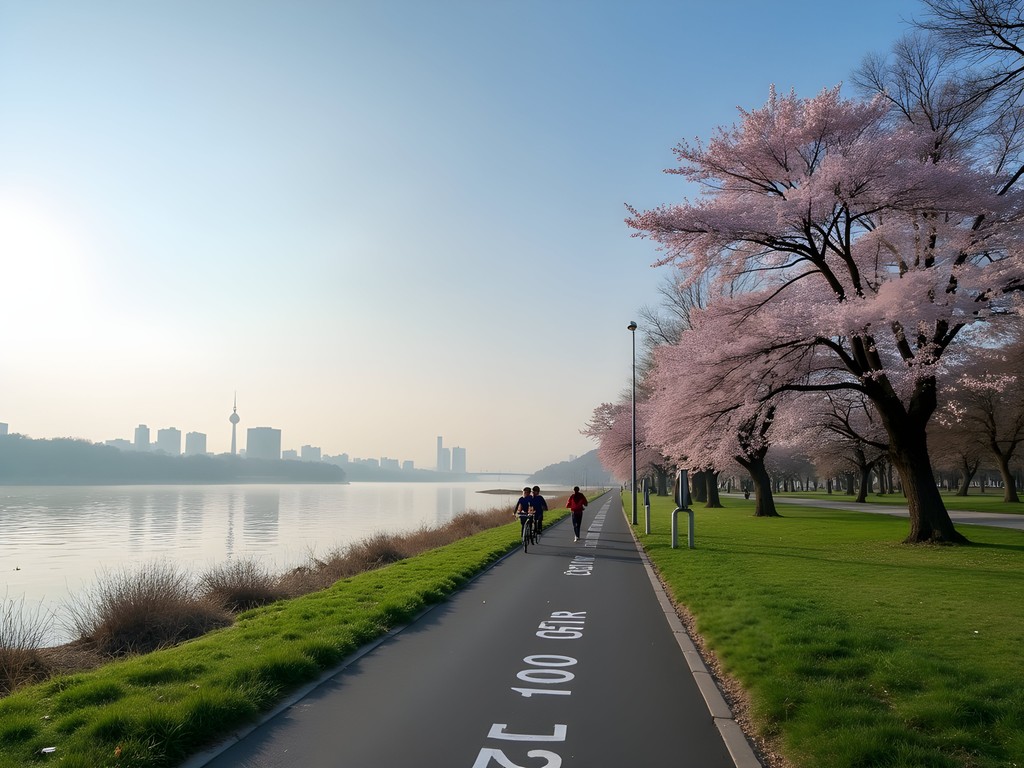
💡 Pro Tips
- Download offline maps of running routes as some park areas have limited cell reception
- Carry small bills (₩1,000 notes) for unexpected water or snack needs during longer runs
- Learn the Korean phrase for 'excuse me' (joshim haseyo) for navigating crowded sections of paths
Final Thoughts
As my week in Seoul drew to a close, I tallied my expenses while sitting on a bench overlooking Cheonggyecheon Stream – the same spot where I'd started my first morning run seven days earlier. The final tally: an average of $46 per day, including accommodation, food, transportation, and even those few vinyl records I couldn't resist. Seoul had delivered experiences that resonated with my soul's deepest frequencies – meditative temple moments, cultural discoveries through music, and connections forged through running – all while respecting my budget traveler's constraints. The city proved that meaningful travel isn't measured by luxury but by authenticity and rhythm. Whether you're a student stretching summer funds, a volunteer worker like myself between assignments, or simply someone who believes travel should be accessible rather than exclusive, Seoul welcomes you with experiences that far outvalue their modest cost. Pack your running shoes, an open spirit, and perhaps leave a little extra room in your bag for a vinyl souvenir or two. The soul of Seoul awaits, and it doesn't require emptying your wallet to fill your heart.
✨ Key Takeaways
- University neighborhoods offer the best value for accommodation, food, and cultural experiences
- Seoul's extensive public transportation and walkable districts eliminate the need for taxis
- Temple visits and public parks provide meaningful cultural experiences at zero cost
- Convenience stores and street markets are budget travelers' best friends for affordable meals
📋 Practical Information
Best Time to Visit
Spring (April-May) or Fall (September-October)
Budget Estimate
$45-50 per day including accommodation
Recommended Duration
5-7 days
Difficulty Level
Easy
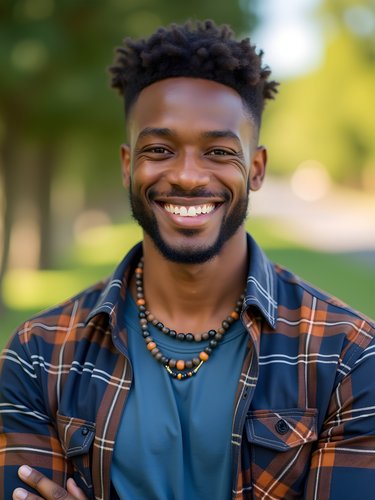
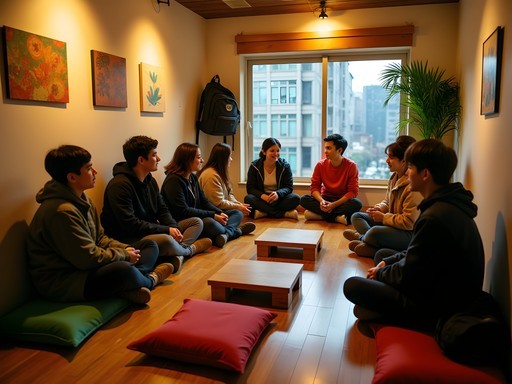
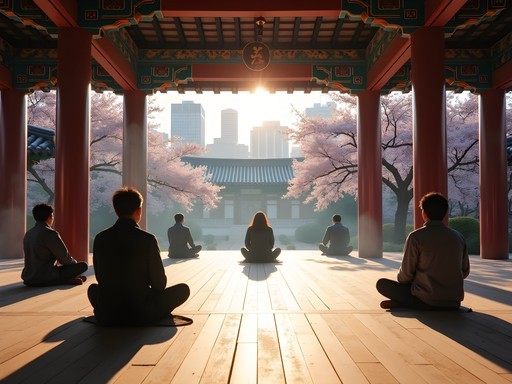
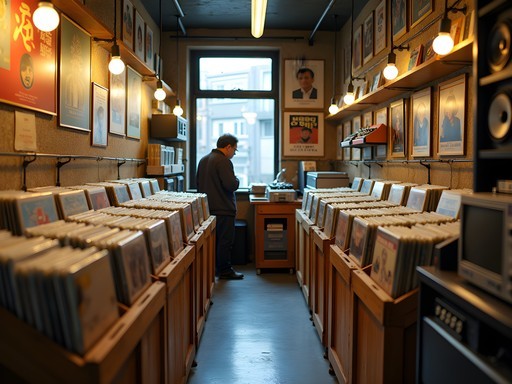
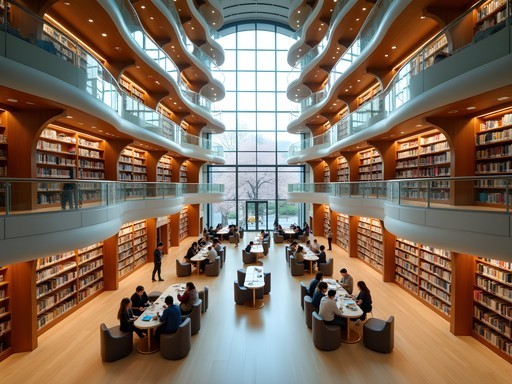
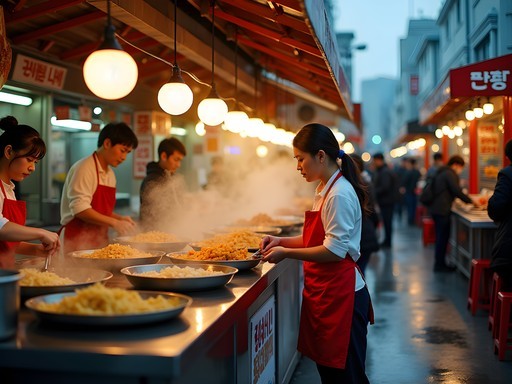
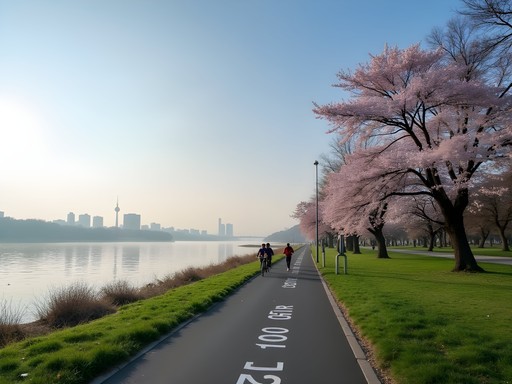



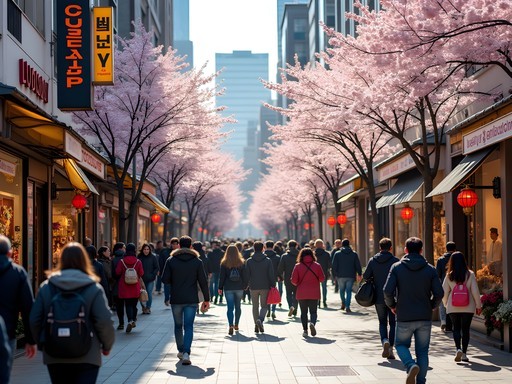
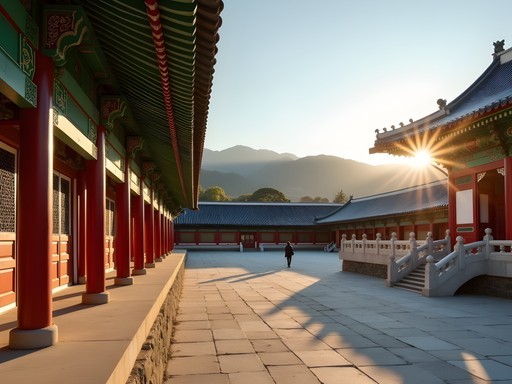
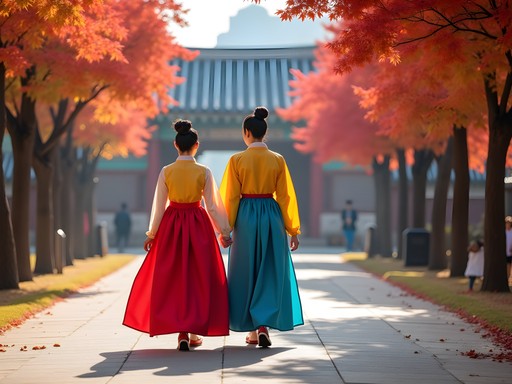
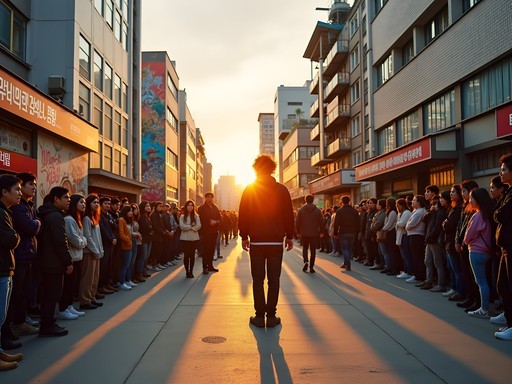
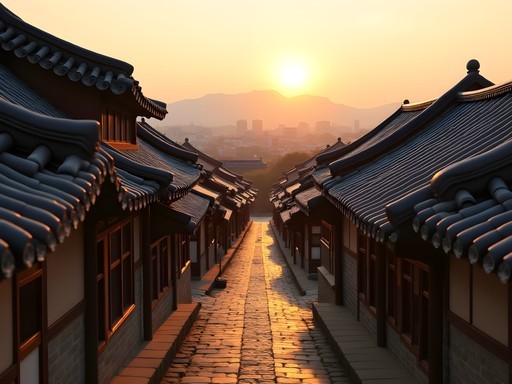
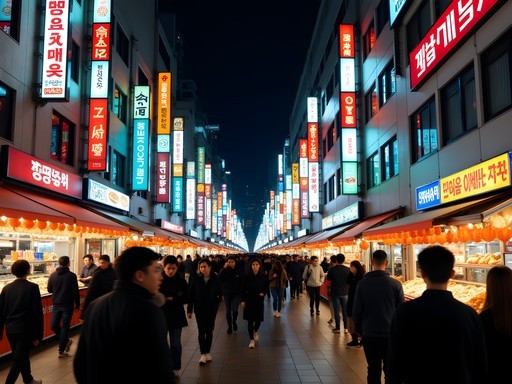

Comments
roamtime
Those street food prices are unreal! Can't wait to try everything!
roamfan
Your section on vinyl hunting was EVERYTHING! I spent three days exploring Seoul's record shops last year and it was the highlight of my trip. Definitely hit up CLIQUE Records in Hongdae if you go back - the owner has an incredible jazz collection and speaks great English. I still listen to the Korean city pop albums I picked up there. Did you find any special records to bring home?
Mason Sullivan
Thanks for the CLIQUE Records tip! I'll definitely check it out next time. I found some amazing early Shin Joong Hyun psych rock and a few Korean pressings of obscure jazz albums. My favorite find was a mint condition copy of Kim Jung Mi's 'Now' - total score!
roamfan
Shin Joong Hyun! You hit the jackpot. I've been hunting for his stuff forever. I always pack my portable record player when I travel to test records before buying. Helps avoid those disappointing scratched finds!
Savannah Torres
Mason, your temple trails section resonated with me so much! We took our kids (8 and 10) to Seoul last summer and weren't sure if they'd appreciate the spiritual sites, but they absolutely loved Jogyesa Temple. The lotus lanterns were a highlight! We also found an amazing temple stay program at Hwagyesa that was surprisingly affordable for a family of four. My daughter still talks about the 5AM chanting ceremony - somehow kids are way more receptive to early mornings when monks are involved! Did you get a chance to try any temple food? The kids were skeptical but ended up loving it.
Mason Sullivan
That's amazing, Savannah! I did try temple food at Balwoo Gongyang - incredible how flavorful purely vegetarian food can be. I love that your kids embraced the temple experience. Children often surprise us with their openness to new cultural experiences!
dreamtime
This is perfect timing! I'm heading to Seoul in January and trying to keep costs down. What neighborhoods would you recommend for budget accommodations? Did you feel safe in the cheaper areas?
Mason Sullivan
Hey dreamtime! I stayed in Hongdae which has great budget options and a fantastic vibe. Very safe, even late at night. Check out goshiwons if you're really trying to save - they're tiny but super affordable!
dreamtime
Thanks so much! Just booked a goshiwon in Hongdae for 6 nights. Can't wait!
kimchi_lover
That shot of Cheonggyecheon Stream at dawn is gorgeous! Making it my phone wallpaper if that's ok!
Mason Sullivan
Absolutely! Glad you like it. The light there at dawn is something special.
budget_backpacker
Just got back from Seoul and followed your advice - saved so much money! One tip to add: download Naver Map instead of Google Maps. It's way more accurate for Seoul's public transit and even shows you which subway car to board for fastest transfers. I used my pocket translator for the few times English wasn't available, but honestly most signs are bilingual.
beachdiver
Thanks for the Naver Map tip! Downloading it now for my trip next week.
vinyl_collector
Your vinyl hunting section spoke to my soul! Just got back from Seoul and spent hours in BGBG Records and Seoul Records. Found some rare Korean pressings from the 70s for under $15 each. The staff at BGBG even invited me to a listening party happening that night. For budget travelers who love music, these shops often have free events with local DJs and sometimes free drinks. Great way to meet locals and other travelers!
vinyl_collector
I missed that one! Adding it to my list for next time. Thanks for the tip!
Sage Dixon
That's awesome! Did you check out Clique Records too? It's a bit hidden but has an amazing jazz collection.
first_time_asia
Is it really possible to do Seoul for under $50/day? Seems too good to be true! What about accommodation costs?
Mason Sullivan
It's definitely doable! I stayed in goshiwons (student housing) for $18-25/night. They're basic but clean with shared bathrooms. Guesthouses in Hongdae area run $20-30/night with breakfast included. Food from convenience stores and local kimbap places can be $3-7 per meal. The key is avoiding tourist traps!
first_time_asia
Thanks! That makes sense. Will look into goshiwons!
travelbackpacker
Those vinyl shops sound amazing! Adding them to my list for sure.
skynomad
Just got back from Seoul last month and followed a similar budget approach. Pro tip: download Naver Maps instead of Google Maps - it's WAY better for navigating Seoul's public transport. Also, the convenience stores (CU, GS25, 7-Eleven) have surprisingly good cheap meals for under $5. I practically lived on triangle kimbap and ramyeon! For cheap souvenirs, skip Insadong and head to Namdaemun Market - same stuff but better prices. Oh, and free WiFi is EVERYWHERE in Seoul, so you can easily skip buying a local SIM if you're on a tight budget.
freegal
Thanks for the Naver Maps tip! Downloading it now for my trip next month!
Venture X
Premium card with 2X miles, $300 travel credit, Priority Pass